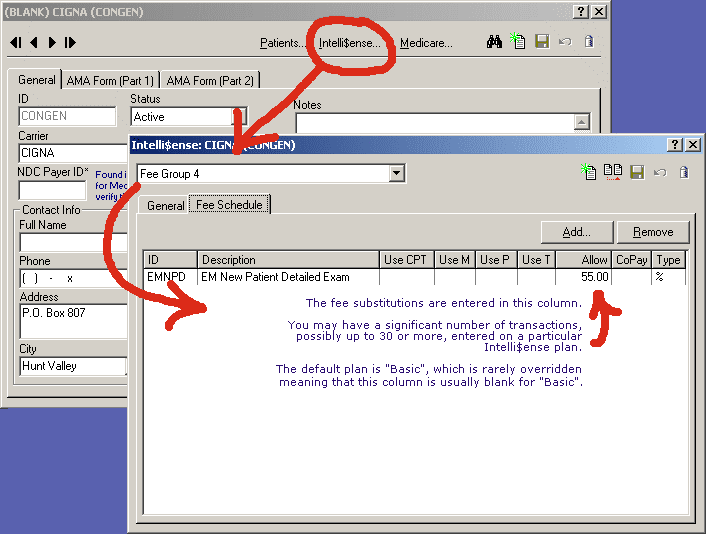Intelli$ense is designed to manage the fee reduction agreements that you have with
managed care organizations. Although you should bill the full retail amount to
the managed care organization, you have agreed to accept a reduced amount. In
this sense, the patient receipt, insurance claim, itemized ledger and patient statement
must show the full "retail" amount of the transaction.
The reduced fee write-off actually occurs when the insurance claim is created
(sometimes called insurance batching). A write-off transaction is created for
each transaction on the claim that has been reduced. This write-off transaction
is named *941-IS Preferred Provider Fee Agreement, indicating it was created by
Intelli$ense. As part of the write-off transaction(s) the patient insurance
balance is adjusted at this time.
This table summarizes the internal "rules" of Intelli$ense:
1) It always prints the "retail" full amount on the patient receipt, as well
as the insurance form.
2) It always calculates the co-pay, however, against the applicable Intelli$ense amount.
As the result of #1 and #2, everything is still accurate, but since you have yet to
bill the insurance carrier, the claim hasn't been created, and accordingly, the reduced
Intelli$ense fee hasn't been consummated.
3) Batch insurance either by Quick Claim or through the Insurance Manager. At the
*instant* that a transaction is processed to a claim, the Intelli$ense reduced fee is
now consummated. Accordingly, at this *instant*, a new transaction, a *941-IS is
created to match each CPT entry that is reduced.
Similar to a *941, a *941-IS is identical but you know that the write-off was created
by Intelli$ense. You can go to claim properties and look at *941-IS's applied to any
claim and you can see that it's easily traceable and auditable by you.
4) Even when the statement or accounting ledger is printed, the *941-IS makes sense to
a layperson. The *941-IS is named as the "Preferred Provider Fee Reduction"
and it makes sense to most patients if they are reading their statement.
5) The benefit of this design is that at any *instant* the aged insurance receivables
provides you with a realistic figure. For example, you may have $100,000 of actual
outstanding insurance, instead of it reporting $120,000 and making you guess on the
pending fee reductions.
